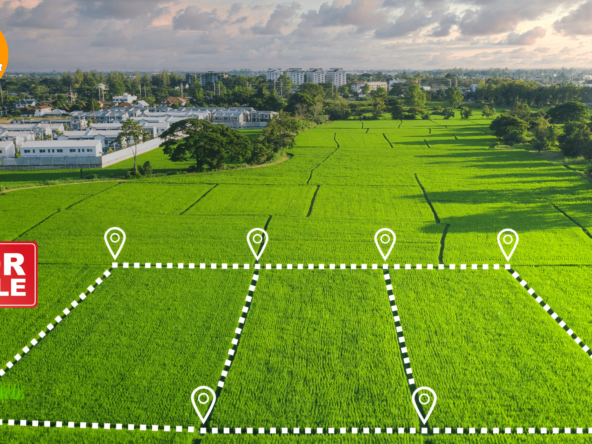
The type of property you should look out for depends on your specific needs, preferences, and financial situation. Here are a few factors to consider:
- Location: Location is key in real estate. Consider factors like proximity to amenities, schools, public transportation, and job opportunities. Also, look into the neighborhood’s safety, reputation, and potential for growth.
- Property Type: Determine whether you’re interested in residential properties (like houses, condos, or apartments) or commercial properties (like office spaces, retail spaces, or industrial properties). Each type has its own benefits and considerations.
- Condition: Assess the condition of the property. Are you willing to take on a fixer-upper, or do you prefer something move-in ready? Consider the age of the property, any necessary repairs or renovations, and how they fit into your budget and timeline.
- Budget: Set a realistic budget based on your financial situation and what you can afford. Factor in not just the purchase price, but also ongoing costs like maintenance, property taxes, insurance, and utilities.
- Potential for Appreciation: Consider the potential for the property to increase in value over time. Look at historical trends in the area’s real estate market and any planned developments or infrastructure improvements that could affect property values.
- Rental Potential: If you’re considering an investment property, evaluate its potential for rental income. Look at rental rates in the area, vacancy rates, and demand from tenants.
- Legal and Regulatory Considerations: Be aware of any legal or regulatory issues that may affect the property, such as zoning restrictions, building codes, homeowners association rules, or tax implications.
- Your Long-Term Goals: Think about your long-term goals for the property. Are you buying it as a primary residence, an investment property, or something else? Make sure the property aligns with your goals and plans for the future.
Deciding whether to buy a property in a peripheral area or the city center depends on various factors, including your lifestyle preferences, budget, investment goals, and personal circumstances. Here are some considerations for each option:
Peripheral Area:
- Affordability: Properties in peripheral areas generally tend to be more affordable than those in the city center. You may be able to get more space for your money in these areas.
- Space: Peripheral areas often offer more space, both in terms of housing and outdoor areas. If you prioritize living in a larger home or having a yard, a peripheral area might be more suitable.
- Quietness: Peripheral areas typically have less traffic and noise compared to city centers, offering a quieter and potentially more peaceful living environment.
- Community Atmosphere: Suburban and rural areas often have a stronger sense of community, with neighbors knowing each other and more community-oriented events and activities.
- Potential for Growth: Peripheral areas may have more room for development and expansion, which could result in potential appreciation of property values over time.
City Centre:
- Convenience: Living in the city center provides easy access to amenities such as restaurants, shops, cultural attractions, and public transportation. You may be able to walk or use public transit for most of your daily needs.
- Employment Opportunities: City centers are usually hubs for businesses, offering a wide range of employment opportunities across various industries. If you work in the city or prefer a shorter commute, living in the city center may be ideal.
- Entertainment and Culture: City centers often have a vibrant cultural scene, including theaters, museums, galleries, and nightlife options. If you enjoy being close to entertainment and cultural activities, the city center might be the right choice.
- Investment Potential: Properties in city centers tend to have higher demand and potential for appreciation over time, making them attractive options for investment purposes.
- Lifestyle: City living offers a dynamic and diverse lifestyle, with a mix of people from different backgrounds and cultures. If you enjoy the energy and excitement of urban living, the city center might be more suitable for you.
Certainly! There are various types of properties you can consider buying, depending on your preferences, needs, and investment goals. Here are some common types:
- Residential Property:
- Single-Family Homes: Detached houses designed for one family.
- Condominiums (Condos): Individual units within a larger complex or building, typically with shared amenities.
- Townhouses: Homes that share walls with adjacent units but have their own entrances.
- Apartments: Units within a multi-unit building, often rented out by landlords.
- Commercial Property:
- Office Buildings: Spaces used for businesses and professional services.
- Retail Spaces: Properties used for selling goods or services directly to consumers.
- Industrial Properties: Warehouses, factories, and distribution centers.
- Mixed-Use Developments: Properties that combine residential, commercial, and sometimes industrial spaces in a single complex.
- Vacation Properties:
- Beach Houses: Homes located near the beach or waterfront, often used as vacation homes.
- Mountain Cabins: Retreats in scenic mountain or rural areas, popular for outdoor recreation.
- Lakefront Properties: Homes situated along lakeshores, offering water activities and relaxation.
- Investment Properties:
- Rental Properties: Properties purchased with the intention of renting them out to tenants for passive income.
- Fixer-Uppers: Properties in need of renovation or repair, which can be bought at a lower price and improved for resale or rental.
- Land: Undeveloped parcels of land that can be held for future development or used for agriculture, recreation, or conservation.
- Specialty Properties:
- Historic Homes: Properties with significant historical or architectural value.
- Luxury Properties: High-end homes with premium features and amenities.
- Green/Eco-Friendly Homes: Properties designed with sustainability and energy efficiency in mind.
- Tiny Houses: Small, compact homes designed for minimalist living.
- Agricultural Property:
- Farms: Land used for cultivation of crops, raising livestock, or both.
- Ranches: Large properties used for raising livestock, such as cattle or horses.
- Vineyards: Properties specifically planted with grapevines for wine production.
- Orchards: Land cultivated with fruit-bearing trees for commercial harvest.
Before buying a property, several important documents are typically required to ensure a smooth and legally sound transaction. These documents may vary depending on the country or region where the property is located and the specific circumstances of the transaction. Here are some common documents you may need:
- Title Deed: This document proves the legal ownership of the property and contains details such as the property’s boundaries, area, and ownership history.
- Sale Agreement or Purchase Contract: A legally binding agreement between the buyer and seller outlining the terms and conditions of the sale, including the purchase price, payment schedule, and any contingencies.
- Property Tax Receipts: Proof that property taxes have been paid up to date. This ensures that there are no outstanding tax liabilities associated with the property.
- Encumbrance Certificate: This document certifies that the property is free from any legal or financial encumbrances, such as mortgages, liens, or pending legal disputes.
- Completion Certificate: If the property is newly constructed, a completion certificate from the local municipal authority may be required to certify that the construction has been completed according to approved plans and regulations.
- Building Plan Approval: Approval from the local municipal authority for the construction or modification of the property, ensuring that it complies with building codes and regulations.
- Occupancy Certificate: If the property is in a multi-story building or complex, an occupancy certificate may be required to certify that the building meets all safety and structural requirements and is suitable for occupation.
- Property Survey Report: A survey report conducted by a licensed surveyor to verify the property boundaries, dimensions, and any encroachments or discrepancies.
- No Objection Certificates (NOCs): Depending on the location and type of property, various NOCs may be required from relevant authorities, such as the local municipal corporation, environmental department, or society/association governing the property.
- Identity and Address Proof: Valid identification documents of the buyer and seller, such as passports, driver’s licenses, or Aadhaar cards, along with proof of address, such as utility bills or bank statements.
- Power of Attorney (if applicable): If one of the parties involved in the transaction is unable to be present in person, a power of attorney document may be required to authorize another person to act on their behalf.
- Loan Documents (if applicable): If the purchase is financed through a loan or mortgage, various loan documents, including loan agreements, mortgage deeds, and loan approval letters, will be required.
Different Land ZonesChatGPT
Land zoning refers to the division of land into different designated zones or areas by local government authorities. Each zone has specific regulations and restrictions regarding land use, development, and construction activities. The exact types of land zones may vary depending on the country, region, or municipality, but here are some common land zones you may encounter:
- Residential Zone: These areas are primarily intended for residential use, including single-family homes, apartments, townhouses, and other types of housing developments. Commercial activities are typically restricted in residential zones, although certain types of home-based businesses may be permitted.
- Commercial Zone: Commercial zones are designated for commercial and business activities, including retail stores, restaurants, offices, hotels, and shopping centers. These areas often have higher traffic volumes and may include provisions for parking and signage.
- Industrial Zone: Industrial zones are intended for manufacturing, warehousing, distribution, and other industrial activities. These areas may have more relaxed regulations regarding noise, pollution, and traffic, given the nature of industrial operations.
- Mixed-Use Zone: Mixed-use zones allow for a combination of residential, commercial, and sometimes industrial uses within the same area. These zones aim to create vibrant and diverse neighborhoods where people can live, work, and play in close proximity.
- Agricultural Zone: Agricultural zones are reserved for farming, ranching, and agricultural activities. These areas may have restrictions on non-agricultural development to preserve farmland and rural landscapes.
- Conservation Zone: Conservation zones are designated for the protection of natural resources, wildlife habitats, and environmentally sensitive areas. Development in conservation zones is typically limited to activities that are compatible with conservation objectives.
- Recreational/Open Space Zone: These zones are reserved for parks, recreational facilities, green spaces, and other public amenities. Development in these areas is often limited to facilities that enhance recreational opportunities and preserve open space.
- Special Purpose Zone: Special purpose zones may be established for specific purposes, such as airports, educational institutions, healthcare facilities, or government offices. These zones have regulations tailored to the unique needs and functions of the designated use.
- Historic/Cultural Zone: Historic or cultural zones are designated to preserve and protect buildings, sites, and areas of historical, architectural, or cultural significance. Development in these zones may be subject to strict regulations to maintain the integrity and character of the designated heritage assets.
- Floodplain/Wetland Zone: These zones are designated to manage flood risk and protect wetlands and water bodies. Development in floodplain and wetland zones may be restricted or subject to special regulations to minimize environmental impacts and flood hazards.
These are some common types of land zones, but there may be additional or specialized zones depending on the specific planning policies and priorities of each jurisdiction. Understanding land zoning regulations is essential for landowners, developers, and investors to ensure compliance with local laws and to make informed decisions about land use and development opportunities.



